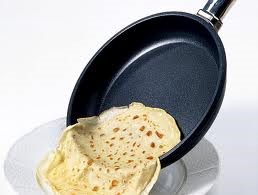Many assume that polytetrafluoroethylene is a thermoset because it seems unaffected by heat.
However, it is a linear polymer chain and a melt transition point can be detected at 327oc but the melt viscosity is so high that it does not appear to soften at all. Consequently, conventional extrusion and injection moulding are out of the question.
Initially PTFE powder from the polymerisation reactor was compressed and heated (sintered) to create solid blocks, sheets and rod. From these more detailed shapes could be machined. Innovative processors produced film and wire coating by loading up the PTFE powder with lubricant to extrude the shape, extract the lubricant and sinter the extrudate to give a cohesive film or coating.
The sheath of fluorine atoms round the carbon backbone not only gives PTFE excellent heat, electrical and chemical resistance but it is responsible for the low coefficient of friction and non-stick qualities.
When polytetrafluoroethylene was introduced almost 70 years ago, engineers were quickly seduced by its outstanding properties. However, they often overlooked the fact that at room temperature it is in its thermoplastic rubbery state. Although it is a very stiff rubbery state due to the exceptionally high crystallinity. Mechanically, PTFE is not much to write home about, particularly when it comes to creep.
Trade names: Fluon, Hostaflon, Teflon
I leave you with a conundrum. If PTFE has such good non-stick properties how do you get it to stick to metal frying pans?
This Knowledge Base article on PTFE was written by Dr. Charlie Geddes for Hardie Polymers.

